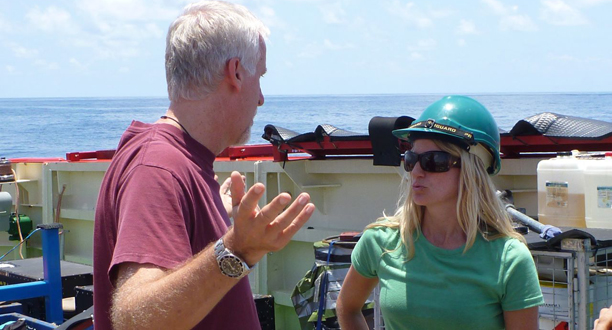Excellent Women

Rabaul, New Britain Island, Papua New Guinea
Early this morning, on our way into Rabaul, we passed the ash-sloped volcanoes just east of town. Backlit by a blood-red sun rising out of the South Pacific Ocean, Kombiu, Taranguna, and Tavurvur seemed like ancient, dark-shouldered warriors guarding the harbor.
“The fire dance is central to the Baining culture. The fire is built with thin sticks that burn quickly with lots of sparks and heat.”
I’m sitting in the Mermaid Sapphire’s mess hall listening to Jane Fajans, an anthropologist and associate professor at Cornell University. In the mid-70s, Jane spent two years studying the customs of the Papua New Guineans inhabiting coastal villages and mountain settlements and learned to speak their language. She has returned several times since. Knowing Jim’s lifelong fascination with indigenous people and their vibrant relationship with the land and the sea, she volunteered to spend the next five days with us. Her passionate knowledge of this almost Neolithic culture reminds you of your favorite university professor.
A woman with long, dark hair wearing jeans and a sky-blue T-shirt sat across the table listening to Jane intently, taking notes and asking questions. Her curiosity was palpable and encompassing. Maria Wilhelm is Jim’s business strategist and all-around advisor. She offers him carefully considered opinions on a wide range of issues, from the commercial backing of this expedition to social advocacy on alternative energy. Maria works on the ship’s bridge across from Captain Buckle; within the space of a given hour she’s juggling sat phone calls with National Geographic in Washington, Rolex in Geneva, CNN in New York, and business associates in China. A woman of multiple intelligences and a seasoned dealmaker, she earned her way to the top. She was a frontline reporter covering revolutions in Haiti and the Philippines and lived the tough stuff during her months in Saudi Arabia, Kuwait, and Iraq during the Gulf War. She also logged time in the Silicon Valley in senior positions at established tech companies and in the rough-and-tumble of start-ups. “It’s an enormous honor and a total blast,” she says of the DEEPSEA CHALLENGE expedition. “We all feel the weight of history and the responsibility that comes with making it.”
Earlier in the day I spent time with Dr. Erika Montague, an ocean scientist who focuses her work on the dynamic boundary between science and technology. The slim, blonde-haired bundle of energy has a P.h.D in oceanography from John Hopkins University and specializes in developing non-destructive methods for sampling and observing species in extreme environments. Like Maria, she has earned her place on this ship. She was a fellow in the engineering division at Monterey Bay Aquarium Research Institute, has 12 years of experience in multidisciplinary research, and has participated in numerous oceanographic expeditions involving submersibles, remotely operated vehicles, and deep-sea landers. On any given day, she seems to be everywhere, advising on modifications to the landers, planning lander missions, analyzing data from the missions, and identifying animals from the sub video. She’s a deadline-driven troubleshooter. If a cable is broken or a depth sensor needs remounting, she’ll have it fixed in time. “This expedition is science and technology on steroids,” she told me. “This is not a job, it’s the opportunity of a lifetime.”
It’s no surprise that these two women—the only females on the ship—are part of the expedition team. They’ve invested years developing their technical and social skills and are at the peak of their game. They know precisely who they are and where they’re going. Each day of this grueling, deep-sea marathon, they display their personal version of cool competence, fierce ingenuity, and mental resilience.
Photograph by Joe MacInnis



